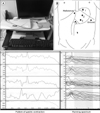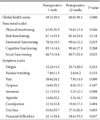1. Quigley EMM. Gastric motor and sensory function and motor disorders of the stomach. In : Feldman M, Friedman LS, Brandt LJ, editors. Sleisenger & Fordtran's Gastrointestinal and Liver Disease Pathophysiology/Diagnosis/Management. 8th ed. Philadelphia: WB Saunders/Elsevier;2006. p. 999–1028.
2. Parkman HP, Hasler WL, Barnett JL, Eaker EY. American Motility Society Clinical GI Motility Testing Task Force. Electrogastrography: a document prepared by the gastric section of the American Motility Society Clinical GI Motility Testing Task Force. Neurogastroenterol Motil. 2003; 15:89–102.

3. Alvarez WC. The electrogastrogram and what it shows. JAMA. 1922; 78:1116–1119.

4. Yin J, Chen JD. Roles of interstitial cells of Cajal in regulating gastrointestinal motility: in vitro versus in vivo studies. J Cell Mol Med. 2008; 12:1118–1129.

5. Smout AJPM, Jebbink HJA, Samson JM. Acquisition and analysis of electrogastrographic data, the Dutch experience. In : Chen JZ, McCallum RW, editors. Electrogastrography, Principles and Applications. New York: Raven Press;1994. p. 3–30.
6. Chang FY. Electrogastrography: basic knowledge, recording, processing and its clinical applications. J Gastroenterol Hepatol. 2005; 20:502–516.

7. Hinder RA, Kelly KA. Human gastric pacesetter potential. Site of origin, spread, and response to gastric transection and proximal gastric vagotomy. Am J Surg. 1977; 133:29–33.
8. Sarna SK, Bowes KL, Daniel EE. Gastric pacemakers. Gastroenterology. 1976; 70:226–231.

9. Chen JD, McCallum RW. Clinical applications of electrogastrography. Am J Gastroenterol. 1993; 88:1324–1336.
10. Chen JD, Richards RD, McCallum RW. Identification of gastric contractions from the cutaneous electrogastrogram. Am J Gastroenterol. 1994; 89:79–85.
11. Sun WM, Smout A, Malbert C, Edelbroek MA, Jones K, Dent J, et al. Relationship between surface electrogastrography and antropyloric pressures. Am J Physiol. 1995; 268:G424–G430.

12. van Dielen FM, de Cock AF, Daams F, Brummer RJ, Greve JW. Gastric myoelectrical activity in morbidly obese patients before and 3 months after gastric restrictive surgery. Obes Surg. 2003; 13:721–727.

13. Richter HM 3rd. Physiologic consequences of vagotomy and gastric resection. Gastroenterol Clin North Am. 1994; 23:193–213.

14. Mackay S, Hayes T, Yeo A. Management of gastric cancer. Aust Fam Physician. 2006; 35:208–211.
15. Houghton J, Wang TC. Tumors of the stomach. In : Feldman M, Friedman LS, Brandt LJ, editors. Sleisenger & Fordtran's Gastrointestinal and Liver disease, Pathophysiology/Diagnosis/Management. 8th ed. Philadelphia: WB Saunders/Elsevier;2006. p. 1139–1170.
16. Carter DC. Carcinoma of the stomach and other tumors. In : Shearman DJC, Finlayson N, Camilleri M, Carter SD, editors. Diseases of the Gastrointestinal Tract and Liver. 3rd ed. New York: Churchill Livingstone;1997. p. 293–322.
17. Zhang Q, Yu JC, Ma ZQ, Kang WM, Ke MY, Qian JM. The effects of enteral nutrition vs parenteral nutrition on gastric motility and gastroenteric hormones after subtotal gastrectomy: a perspective randomized compared clinical trial. Zhonghua Wai Ke Za Zhi. 2006; 44:728–732.
18. Lee HF, Chang FY, Lu CL, Luo JC, Chen CY, Wu HC. Electrogastrographic characteristics in subjects with stomach remnant. J Gastroenterol Hepatol. 2010; 25:339–344.

19. Homma S, Kobayashi Y, Kosugi S, Ohashi M, Kanda T, Okamoto H, et al. Postoperative reorganization of gastric pacemaker activity in patients after an extended period following distal gastrectomy. J Smooth Muscle Res. 2008; 44:113–122.

20. Imai K, Sakita M. Pre- and postoperative electrogastrography in patients with gastric cancer. Hepatogastroenterology. 2005; 52:639–644.
21. Hayashi T, Kinami S, Fushida S, Fujimura T, Miwa K, Inoue K. Evaluation of residual stomach motility after proximal gastrectomy for gastric cancer by electrogastrography. Dig Dis Sci. 2006; 51:268–273.

22. Koch KL. Electrogastrography: physiological basis and clinical application in diabetic gastropathy. Diabetes Technol Ther. 2001; 3:51–62.

23. Camilleri M, Hasler WL, Parkman HP, Quigley EM, Soffer E. Measurement of gastrointestinal motility in the GI laboratory. Gastroenterology. 1998; 115:747–762.

24. Riezzo G, Chiloiro M, Guerra V. Electrogastrography in healthy children: evaluation of normal values, influence of age, gender, and obesity. Dig Dis Sci. 1998; 43:1646–1651.
25. Cheung B, Vaitkus P. Perspectives of electrogastrography and motion sickness. Brain Res Bull. 1998; 47:421–431.

26. You CH, Chey WY, Lee KY, Menguy R, Bortoff A. Gastric and small intestinal myoelectric dysrhythmia associated with chronic intractable nausea and vomiting. Ann Intern Med. 1981; 95:449–451.

27. van der Schee EJ, Grashuis JL. Contraction-related, low-frequency components in canine electrogastrographic signals. Am J Physiol. 1983; 245:G470–G475.

28. Bracci F, Matarazzo E, Mosiello G, Caione P, Cianchi D, Ponticelli A. Preliminary report of electrogastrography in pediatric gastroresection: can it be predictive of alteration of gastric motility? J Pediatr Surg. 2001; 36:1157–1159.

29. Bures J, Kabelác K, Kopácová M, Vorísek V, Siroký M, Palicka V, et al. Electrogastrography in patients with Roux-en-Y reconstruction after previous Billroth gastrectomy. Hepatogastroenterology. 2008; 55:1492–1496.
30. Murakami H, Matsumoto H, Kubota H, Higashida M, Nakamura M, Hirai T. Evaluation of electrical activity after vagus nerve-preserving distal gastrectomy using multichannel electrogastrography. J Smooth Muscle Res. 2013; 49:1–14.





 PDF
PDF ePub
ePub Citation
Citation Print
Print








 XML Download
XML Download